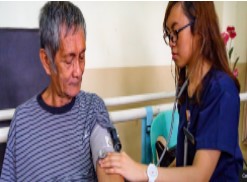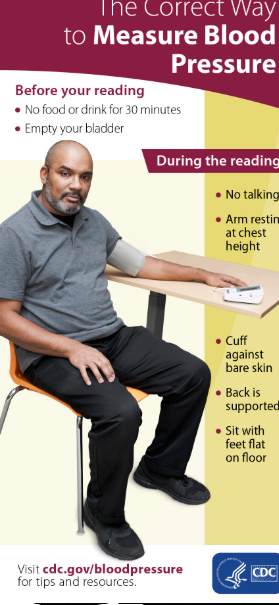How to take resting blood pressure correctly. Our Doctors are always asking, how or what is your resting blood pressure. You give the numbers or hand over your daily log, But the question remains. How did you take {important word} YOUR RESTING PRESSURE?

The World Health Organization, 25 August 2021 news release; More than 700 million people with untreated hypertension. The release continues; The number of adults in the world between the ages 30–79 years with hypertension increased from 650 million to 1.28 billion in the last thirty years. And more than 700 million people live with untreated hypertension. I don’t know about you, but I was shocked to say the lease. Time covered from 1990 to 2019 and the testing was done in 184 countries.
According to the CDC, center for control and prevention; heart disease, and strokes: are 2 of the leading causes of death in the USA. Also, Hypertension is a major preventable risk factor for heart disease and stroke, which are the first and fifth leading causes of death in the United States, respectively. The USA Surgeon General’s Call to Action to Control Hypertension
WHAT IS BLOOD PRESSURE?
Blood Pressure is the pressure of blood, pushing against the wall of your arteries; as the blood goes through your body. Arteries carry blood from your heart to other parts of the body. Systolic blood pressure the first number tells how much pressure your blood applies against your artery walls when the heart beats: Diastolic blood pressure the second number tells how much pressure your blood applies against your artery walls while the heart is resting between beats.
The American Heart Association and, the American College of Cardiology, recently changed the definition of high blood pressure, “known as hypertension”. It is now defined as the systolic or upper number of 130 or higher and, the diastolic or lower number as 80 or higher consistently. Furthermore, If your resting blood pressure is 130/80 or above, your doctor will recommend further evaluation; or review the medication being taken for existing Hypertension.
Blood Pressure Categories

There are 5 blood pressure ranges recognized by the American Heart Association are:
NORMAL
Blood pressure numbers of less than 120/80 mm Hg are considered within the normal range.
Elevated
Your blood pressure is considered elevated when readings consistently range from 130 and above systolic and 80 and above mmHg diastolic
High Blood Pressure Stages; Hypertension stage 1
When blood pressure consistently reads from 130-139 systolic or 80-89 mm Hg diastolic. The Doctor will discuss, with you, lifestyle changes and may prescribe blood pressure medication.
Hypertension Stage 2
It is when the blood pressure is consistently between 140/ 90 and higher, At this stage your doctor will order blood pressure medication, one type, or a combination. And possibly refer you to the dietician.
Hypertensive Crisis
At this stage of high blood pressure, urgent medical care is needed. If you are at home and took your blood and numbers 180/120 or higher; wait 5 minutes, and then take your pressure again; If the readings remain the same or higher; Call your doctor at once.

If your blood pressure is higher than 180/120 mm Hg; and you are having signs such as chest pain, shortness of breath, back pain, numbness/weakness, changes in vision, or difficulty speaking, do not wait to see if your pressure comes down on its own. Call 911.
Preparation for taking your blood pressure!
Resting blood pressure does not mean you rest 10 mins, then get up and spend the next 15 mins looking for the cuff, finding batteries, then taking the pressure. First-you get the cuff; pencil and paper; check to ensure the machine is working; place everything next to the chair you will be resting in.
- Do not eat or drink, smoke, or exercise for 1/2 hour before checking your pressure.
- Empty your bladder, so you are comfortable.
- Your chair should be comfortable, plus have good back support.
- Rest for at least 5 mins before your reading.
- Have both feet on the ground and legs uncrossed.
- Apply cuff, snug but not tight. Against your skin, not over clothes.
- No talking during the measuring process.
- Rest your arm with the cuff on, atop the armrest or table, at chest level.
TAKING THE READING.
Make sure the blood pressure cuff is snug but not too tight. You are now ready to start the blood pressure machine. Relax and allow the reading to take place. And NO Talking, Once the cuff has deflated and the final numbers appear on the monitor, write the numbers down. Then removed the cuff. You are all done. In addition, you can take readings at different times during the day and not always at rest, so the reading can be compared. Always mark the resting numbers with your own special mark. So you can tell the Doctor which was which
The Importance Of The Recorded Numbers
In conclusion, For those of us who have hypertension, and taking medication. Our blood pressure numbers tell us, and the doctor, how well we are doing. Is the medication working correctly, and is an adjustment or change needed? Are you following the diet restriction discussed with the doctor? The consequences of uncontrolled hypertension can be severe. We owe it to ourselves to monitor, keep doctor’s appointments, watch our diet, quit smoking, and above all, take the medications as prescribed, not only when we feel bad.
KEEP INFORMED. See the other amazing finds Here
We are available to Contact with Regard to This site, See How by CLICKING HERE

